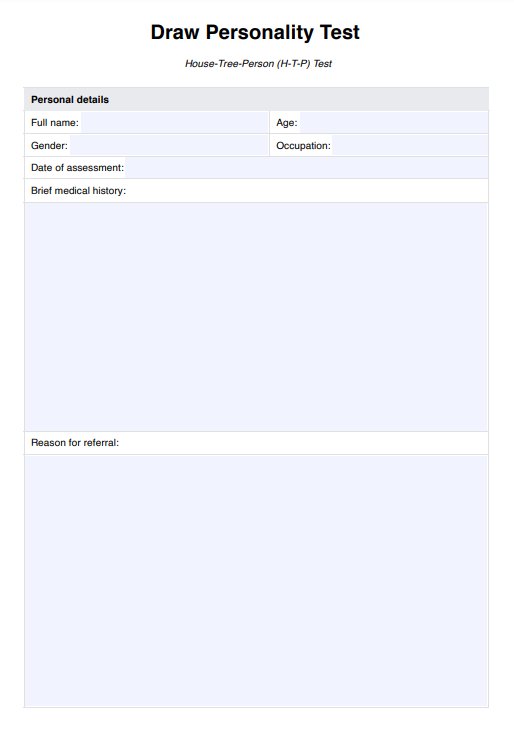Draw Personality Tests, or figure drawing tests, are used by psychologists, therapists, counselors, and other mental health professionals.

Draw Personality Test
Discover how Draw Personality Tests offer unique insights into emotions and personality traits through artistic expression. Access our free PDF template now.
Use Template
Draw Personality Test Template
Commonly asked questions
Draw Personality Tests can be used when conducting personality assessments, especially with individuals who may find verbal expression challenging.
The Draw Personality Test involves having an individual draw a specific image, which a trained professional analyzes to gain insights into their personality and emotional state.
EHR and practice management software
Get started for free
*No credit card required
Free
$0/usd
Unlimited clients
Telehealth
1GB of storage
Client portal text
Automated billing and online payments











